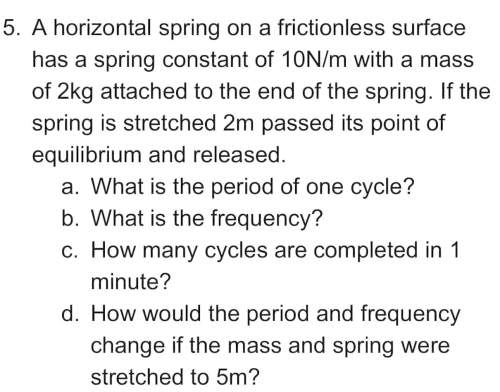
Astudent is examining a bacterium under the microscope. the e. coli bacterial cell has a mass of m = 0.900 fg (where a femtogram, fg, is 10^−15g) and is swimming at a velocity of v = 2.00 μm/s , with an uncertainty in the velocity of 3.00 % . e. coli bacterial cells are around 1 μm ( 10^−6 m) in length. the student is supposed to observe the bacterium and make a drawing. however, the student, having just learned about the heisenberg uncertainty principle in physics class, complains that she cannot make the drawing. she claims that the uncertainty of the bacterium's position is greater than the microscope's viewing field, and the bacterium is thus impossible to locate.
part a
what is the uncertainty of the position of the bacterium? express your answer with the appropriate units.

Answers: 2


Other questions on the subject: Physics

Physics, 22.06.2019 02:30, ParallelUniverse
Gunpowder residue is most likely to show up where on a shooters hands
Answers: 1

Physics, 22.06.2019 06:40, PerfectMagZ
Alinearly polarized electromagnetic wave has an average intensity of 196 w/m^2. this wave is directed towards two ideal polarizers (in real polarizers, transmission is also effected by reflection and absorption). polarizer a is oriented with its transmission axis at an angle of θ_1=20.8∘ with the incident electric field. polarizer b has its axis at an angle of θ_2=63.0∘ with the incident electric field. what is the average intensity of the wave after it passes through polarizer a? what is the average intensity of the wave after it passes through polarizer b? suppose that the two polarizers a and b are interchanged. what would the average intensity be after passing through both polarizers?
Answers: 2

Physics, 22.06.2019 07:20, coolusername1314
The softest and hardest minerals are: softest hardest
Answers: 1

Physics, 23.06.2019 00:10, 2002boo13
Consider a small frictionless puck perched at the top of a fixed sphere of radius r. if the puck is given a tiny nudge so that it begins to slide down, through what vertical height will it descend before it leaves the surface of the sphere? [hint: use conservation of energy to find the puck's speed as a func e conservation of energy to find the puck's speed as a function of its height at what value of this normal force does the puck leave the sphere? ] here on the puck.
Answers: 2
You know the right answer?
Astudent is examining a bacterium under the microscope. the e. coli bacterial cell has a mass of m =...
Questions in other subjects:

Geography, 23.09.2020 22:01


English, 23.09.2020 22:01


Health, 23.09.2020 22:01




English, 23.09.2020 22:01





